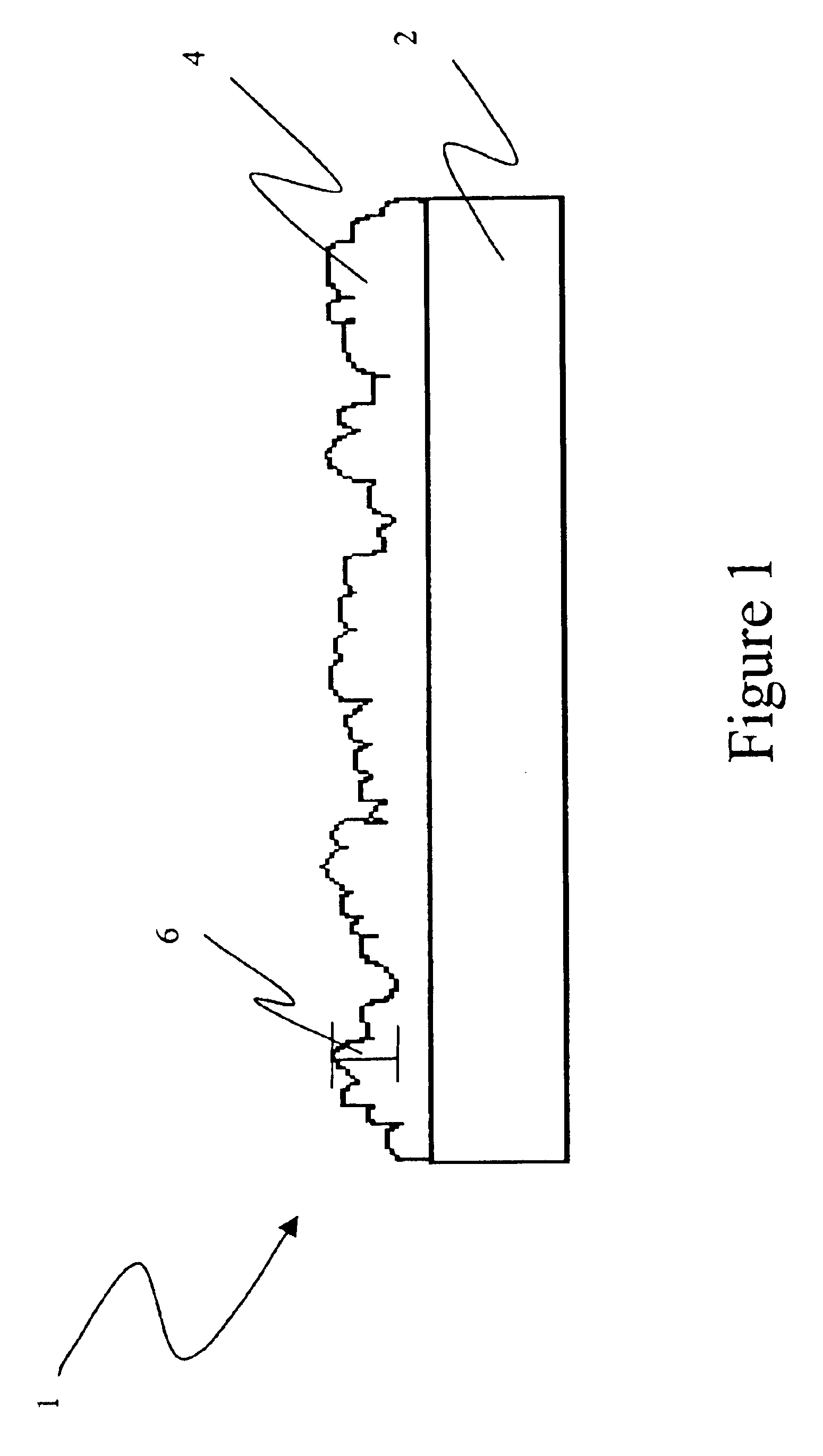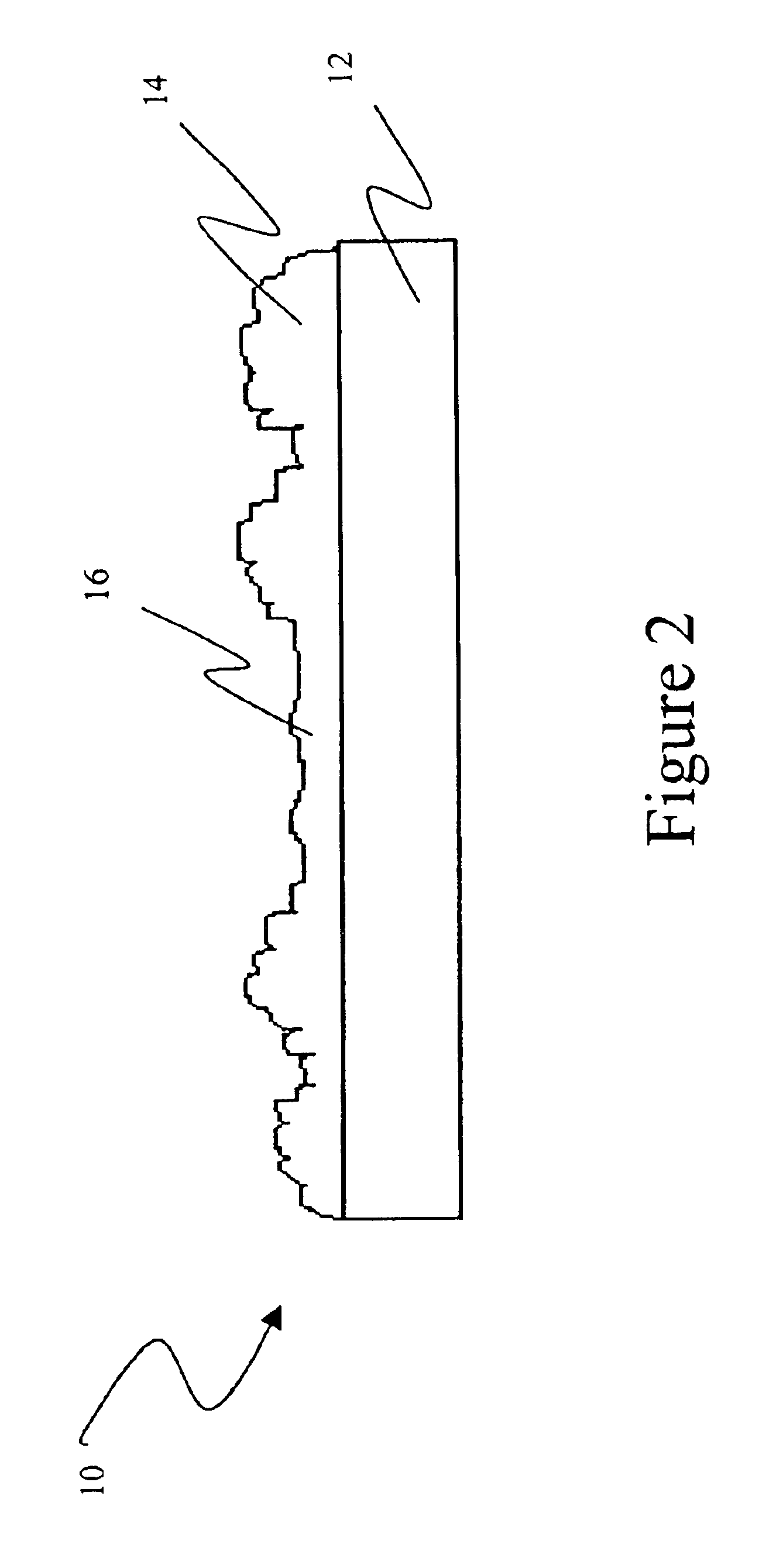Increased contrast overhead projection films
a technology of overhead projection and contrast, applied in the field of projection media, can solve the problems of disturbing and detracting operation, viewers cannot easily see the light colors printed on the transparency, and current projection film has some drawbacks, so as to achieve the effect of increasing contras
- Summary
- Abstract
- Description
- Claims
- Application Information
AI Technical Summary
Benefits of technology
Problems solved by technology
Method used
Image
Examples
example
In this example, the projection of the invention was created by extrusion casting an extrusion grade polyolefin polymer against a pattered chill roll containing complex lens geometry. The patterned polyolefin polymer, in the form of the complex lenses was then transferred to a polyester web material thereby forming a projection material with light diffusion elements in the form of complex surface lenses. This example will show that the complex lenses formed on a transparent polymer web material and selective melting of the lenses and added coloration will produce a printed projection media. Further, it will be obvious that the projection media will be simply made and have mechanical properties that allow for use in overhead projection systems.
A patterned chill roll was manufactured by a process including the steps of abrasively blasting the surface of the chill roll with grit (can be glass or other materials) to create a surface texture with hemispherical features. The resulting bla...
PUM
| Property | Measurement | Unit |
|---|---|---|
| transparent | aaaaa | aaaaa |
| Tg | aaaaa | aaaaa |
| peak to valley height | aaaaa | aaaaa |
Abstract
Description
Claims
Application Information
 Login to View More
Login to View More - R&D
- Intellectual Property
- Life Sciences
- Materials
- Tech Scout
- Unparalleled Data Quality
- Higher Quality Content
- 60% Fewer Hallucinations
Browse by: Latest US Patents, China's latest patents, Technical Efficacy Thesaurus, Application Domain, Technology Topic, Popular Technical Reports.
© 2025 PatSnap. All rights reserved.Legal|Privacy policy|Modern Slavery Act Transparency Statement|Sitemap|About US| Contact US: help@patsnap.com



